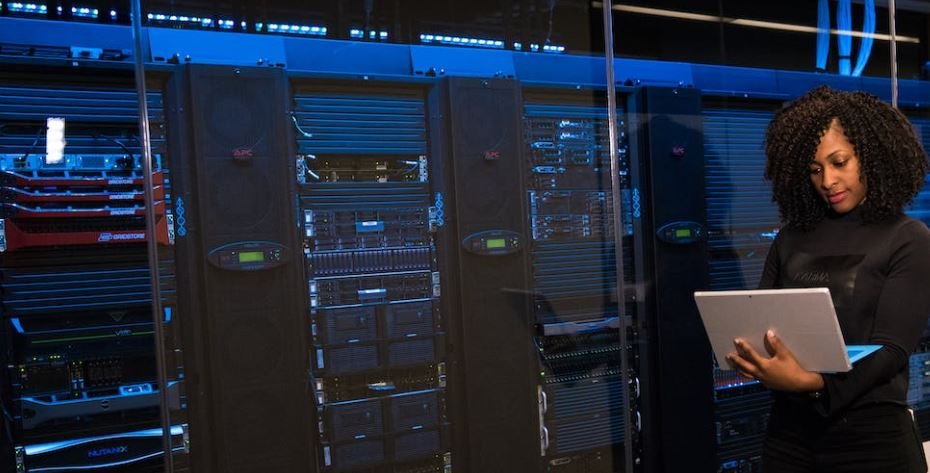Tesla: Revolutionizing the Automobile Industry
When it comes to electric vehicles, Tesla has emerged as a powerhouse, leading the way with its innovative technology and sleek design. Founded in 2003 by Elon Musk, Tesla has not only transformed the perception of electric cars but also challenged the traditional automotive industry. With a focus on sustainability and cutting-edge engineering, this article explores Tesla’s journey and its impact on the automobile market.
Key Takeaways:
- Tesla is a leading player in the electric vehicle market.
- The company’s sustainable approach and advanced technology have disrupted the traditional automotive industry.
- Electric vehicles offer several advantages, including reduced environmental impact and lower operating costs.
- Tesla’s Supercharger network provides convenient and efficient charging solutions.
- Tesla’s Autopilot feature offers semi-autonomous driving capabilities.
From its inception, Tesla set out to create electric cars that could rival their gasoline-powered counterparts. The company’s first model, the Tesla Roadster, boasted impressive acceleration and range, dispelling the notion that electric cars were slow and limited in their capabilities. Since then, Tesla has unveiled a range of models, including the popular Model S, Model 3, Model X, and Model Y.
With its sleek design and impressive performance, the Tesla Roadster proved that electric cars can be both sustainable and exciting.
One of the key factors contributing to Tesla’s success is its Supercharger network, a vast network of charging stations strategically placed to offer maximum convenience for Tesla owners. These Superchargers provide fast charging and encourage long-distance travel by reducing the time spent on charging. Tesla’s Supercharger network facilitates seamless trips, alleviating the anxieties associated with electric vehicle range.
| Model | Range (miles) | Acceleration (0-60 mph) |
|---|---|---|
| Model S | 390+ | 2.3s |
| Model 3 | 250+ | 3.1s |
| Model X | 360+ | 2.6s |
Tesla’s Supercharger network has revolutionized the electric vehicle charging experience, enabling convenient long-distance travel.
Moreover, Tesla’s vehicles incorporate advanced driver-assistance systems, with one notable feature being Autopilot. Autopilot offers a semi-autonomous driving experience, allowing the driver to relinquish control of certain driving tasks under specific conditions. This pioneering technology has paved the way for future autonomous vehicles and has sparked interest and initiatives among other automakers.
Data Point Comparisons:
- Tesla’s vehicle sales have consistently grown over the years.
- The Model 3 is Tesla’s best-selling and most affordable model.
| Year | Vehicle Sales |
|---|---|
| 2017 | 100,000 |
| 2018 | 245,000 |
| 2019 | 367,500 |
| 2020 | 499,550 |
| 2021 | 758,000 (estimated) |
Tesla’s Autopilot feature is revolutionizing the driving experience, paving the way for future autonomous vehicles.
In conclusion, Tesla has profoundly impacted the automobile industry, shaping the narrative around electric vehicles that were once considered niche. With its focus on sustainable technology, extensive Supercharger network, and advanced driver-assistance systems, Tesla continues to push the boundaries of innovation in the automotive sector. As the world transitions towards a more sustainable future, Tesla’s presence and influence are set to grow even further.

Common Misconceptions
Misconception 1: Electric cars are slow
One common misconception about Tesla vehicles is that electric cars are slow and lack performance compared to traditional gasoline-powered vehicles. This is far from the truth as Tesla cars are known for their impressive acceleration and quickness on the road.
- Tesla Model S can accelerate from 0 to 60 mph in just 2.3 seconds.
- Tesla Model 3 offers a faster 0-60 mph time compared to many popular gasoline sedans in its class.
- Teslas have instant torque, allowing for quick and responsive acceleration.
Misconception 2: Teslas are expensive
Another misconception is that Teslas are only affordable for the wealthy and the general public cannot afford them. While initially Tesla vehicles had higher price tags, the company has introduced more affordable options, making electric cars accessible to a broader range of consumers.
- Tesla Model 3 is Tesla’s most affordable vehicle, starting at a relatively lower price compared to their other models.
- Teslas are eligible for federal and state tax incentives, which can significantly reduce the overall cost.
- Tesla cars generally have lower operating costs due to reduced maintenance and fuel expenses.
Misconception 3: Electric cars have limited range
One common misconception is that electric cars, including Teslas, have limited range and need frequent recharging, which can be inconvenient for long journeys. However, Tesla vehicles are equipped with advanced battery technology that allows for substantial driving ranges.
- Tesla Model S offers a range of up to 390 miles on a single charge, depending on the configuration.
- Tesla Supercharger network provides faster charging options, reducing charging time significantly.
- Tesla vehicles have built-in navigation systems that give real-time information about nearby charging stations, making long trips easier to plan.
Misconception 4: Electric cars aren’t suitable for harsh weather conditions
There is a misconception that electric cars, such as Teslas, may struggle in extreme weather conditions, including cold winters or hot summers. However, Tesla vehicles are designed to perform well in various weather conditions.
- Tesla cars have advanced battery thermal management systems that help regulate temperature and maintain optimal performance in extreme weather.
- Tesla Model X, for instance, offers cold-weather features such as heated seats and steering wheel, along with a preheating option to warm up the car before entry.
- Teslas have efficient heating and cooling systems that use less energy compared to conventional gas-powered cars.
Misconception 5: Electric cars don’t have a reliable charging infrastructure
Some people believe that there is a lack of charging infrastructure for electric vehicles, making it inconvenient to own a Tesla. However, Tesla has made significant investments in charging infrastructure to support its vehicles.
- Tesla Supercharger network consists of thousands of charging stations globally, providing fast and reliable charging for long-distance travel.
- Tesla Destination Charging offers charging stations at various locations, including hotels, resorts, and shopping centers, making it easier to charge your car while running errands or staying overnight.
- Charging networks are expanding, with governments and private companies investing in the development of more public charging stations.

Tesla Like
Tesla, the revolutionary electric vehicle company founded by Elon Musk, has taken the automotive industry by storm. With their innovative designs, advanced technology, and commitment to sustainability, Tesla has become synonymous with cutting-edge transportation. In this article, we will explore ten fascinating aspects of Tesla’s success.
1. Global Tesla Sales (2010-2021)
Tesla’s global sales have soared over the past decade, reflecting the strong demand for electric vehicles worldwide. The table below showcases the year-wise sales figures from 2010 to 2021, highlighting Tesla’s exponential growth.
| Year | Units Sold |
|---|---|
| 2010 | 1,542 |
| 2011 | 2,250 |
| 2012 | 2,650 |
| 2013 | 22,477 |
| 2014 | 31,655 |
| 2015 | 50,580 |
| 2016 | 76,230 |
| 2017 | 103,020 |
| 2018 | 245,240 |
| 2019 | 367,500 |
| 2020 | 499,550 |
| 2021 (Jan – Aug) | 596,877 |
2. Tesla Vehicle Models and Their Ranges
Tesla offers a range of electric vehicles, each with its own capabilities and features. Here, we present a breakdown of Tesla’s major models and their estimated maximum ranges on a full charge.
| Model | Maximum Range (miles) |
|---|---|
| Tesla Model S Plaid+ | 520+ |
| Tesla Model 3 Long Range | 353 |
| Tesla Model 3 Standard Range Plus | 263 |
| Tesla Model X Long Range | 360 |
| Tesla Model X Plaid | 340 |
| Tesla Model Y Long Range | 326 |
| Tesla Model Y Standard Range | 244 |
3. Supercharger Locations Around the World
Tesla’s extensive Supercharger network allows owners to recharge their vehicles quickly and conveniently. Here, we showcase the number of Supercharger stations available in different regions worldwide.
| Region | Number of Supercharger Stations |
|---|---|
| North America | 949 |
| Europe | 600 |
| Asia-Pacific | 466 |
4. Increased Charging Speeds
Tesla continuously strives to improve the charging speeds of their vehicles. The table below demonstrates their charging capabilities, expressed in terms of added range per hour of charging at different charging power levels.
| Charging Power Level | Added Range Per Hour (miles) |
|---|---|
| Tesla Supercharger V3 | 180 |
| Tesla Supercharger V2 | 150 |
| Home Charging Outlet | 31 |
5. Teslas on Autopilot
Tesla’s Autopilot feature provides advanced driver assistance, making driving safer and more convenient. The table below shows the number of Teslas equipped with Autopilot technology that have driven billions of miles, contributing to Tesla’s autonomous driving advancements.
| Number of Teslas on Autopilot | Miles Driven |
|---|---|
| Over 1 Million | Over 3.7 Billion |
6. Gigafactory Production Capacity
Tesla’s Gigafactories play a vital role in meeting the increasing demand for electric vehicles. This table showcases the estimated annual production capacity of Tesla‘s Gigafactory locations.
| Gigafactory Location | Estimated Annual Capacity (Units) |
|---|---|
| Shanghai, China | 450,000 |
| Fremont, California | 590,000 |
| Berlin, Germany (under construction) | 500,000 |
| Texas, United States (under construction) | unknown |
7. Tesla’s Market Capitalization (2021)
Tesla’s exceptional growth is reflected in its market capitalization, which represents the total value of the company’s outstanding shares. The table below presents a snapshot of Tesla’s market capitalization in 2021.
| Date | Market Capitalization (in billions) |
|---|---|
| January 1st | 773 |
| May 1st | 690 |
| August 1st | 665 |
8. Number of Tesla Employees
Tesla’s vision is brought to life by its passionate workforce, contributing to its phenomenal success. The table below showcases the number of employees at Tesla over the years.
| Year | Number of Employees |
|---|---|
| 2010 | 899 |
| 2015 | 13,058 |
| 2020 | 48,016 |
9. Tesla’s Renewable Energy Footprint
Tesla is committed to sustainability not only in its vehicles but also in its energy solutions. The following table highlights Tesla’s renewable energy generation and storage capacities.
| Renewable Energy Category | Capacity (in GWh) |
|---|---|
| Solar Energy Generation | 3,240 |
| Energy Storage Systems Installed | 4,017 |
10. Tesla’s No-Dealer, Direct Sales Model
Unlike traditional dealership networks, Tesla follows a direct sales model, eliminating the need for intermediaries. This table demonstrates the number of Tesla retail locations and service centers globally.
| Region | Number of Retail Locations | Number of Service Centers |
|---|---|---|
| North America | 125+ | 80+ |
| Europe | 165+ | 135+ |
| Asia-Pacific | 82+ | 45+ |
Tesla’s meteoric rise in the automotive industry can be attributed to its relentless pursuit of innovation, commitment to sustainable mobility solutions, and exceptional consumer demand. As the company continues to expand its product lineup, charging infrastructure, and global presence, Tesla’s influence on the future of transportation is undeniable.
Frequently Asked Questions
What is the range of a Tesla electric vehicle?
The range of a Tesla electric vehicle depends on the model. The Model S can achieve a range of up to 390 miles, while the Model 3 has a range of up to 353 miles. The Model X and Model Y have ranges of up to 371 miles and 326 miles, respectively.
How long does it take to charge a Tesla?
Charging time for a Tesla varies depending on the charging method and the battery size of the vehicle. With a Tesla Supercharger, you can get up to 75 miles of range in just 5 minutes, and a full charge can be achieved in about 1 hour. Charging at home using a Level 2 charger typically takes around 8-12 hours for a full charge.
What is Autopilot in Tesla cars?
Autopilot is an advanced driver-assistance system (ADAS) developed by Tesla. It uses a combination of cameras, sensors, and radars to provide features such as lane-centering, adaptive cruise control, self-parking, and automatic lane changing. Autopilot assists the driver but still requires their attention and supervision at all times.
Can Teslas drive themselves?
Yes, Tesla vehicles are capable of autonomous driving with Tesla’s Full Self-Driving (FSD) feature. FSD enables the vehicle to navigate on its own, including making turns, changing lanes, and parking itself. However, it is important to note that FSD is currently in beta testing and always requires driver supervision.
Where can I find Tesla Supercharger stations?
Tesla Supercharger stations are located strategically throughout various regions. They are often found along major highways, in urban areas, and at popular destinations. You can find the nearest Supercharger stations using the Tesla Navigation system, the Tesla mobile app, or by visiting the Tesla website.
What is the pricing of Tesla vehicles?
The pricing of Tesla vehicles varies depending on the model and any additional features or customizations. As of now, the starting price for the Model 3 is $39,990, the Model Y starts at $49,990, the Model S ranges from $79,990 to $139,990, and the Model X starts from $89,990 to $149,990. These prices are subject to change and may vary in different regions.
Do Tesla electric vehicles require regular maintenance?
Tesla electric vehicles have fewer maintenance requirements compared to traditional gasoline-powered cars. They do not require oil changes, have fewer moving parts, and regenerative braking reduces wear on brake pads. However, routine maintenance such as tire rotations, brake fluid replacements, and air filter changes should still be performed as recommended by Tesla.
What is the warranty on Tesla vehicles?
Tesla provides a warranty for their vehicles to cover certain repairs and defects. The warranty typically includes a New Vehicle Limited Warranty for 4 years or 50,000 miles, whichever comes first, and a Battery and Drive Unit Limited Warranty for either 8 years or a certain mileage threshold depending on the model. Additional extended warranties may also be available.
Can I tow with a Tesla?
Yes, some Tesla models, specifically the Model S and Model X, can tow trailers. However, it is essential to check the specific towing capability of your Tesla model as it may vary. The towing capacity generally ranges from 2,000 to 5,000 pounds depending on the configuration and version of the vehicle.
Are there any incentives or tax credits for purchasing a Tesla?
In some regions, there are incentives and tax credits available for purchasing a Tesla electric vehicle. These incentives can include federal tax credits, state rebates, or other local benefits aimed at promoting electric vehicle adoption. The availability and value of these incentives may vary, so it is recommended to check with local authorities or Tesla for the most accurate information.




